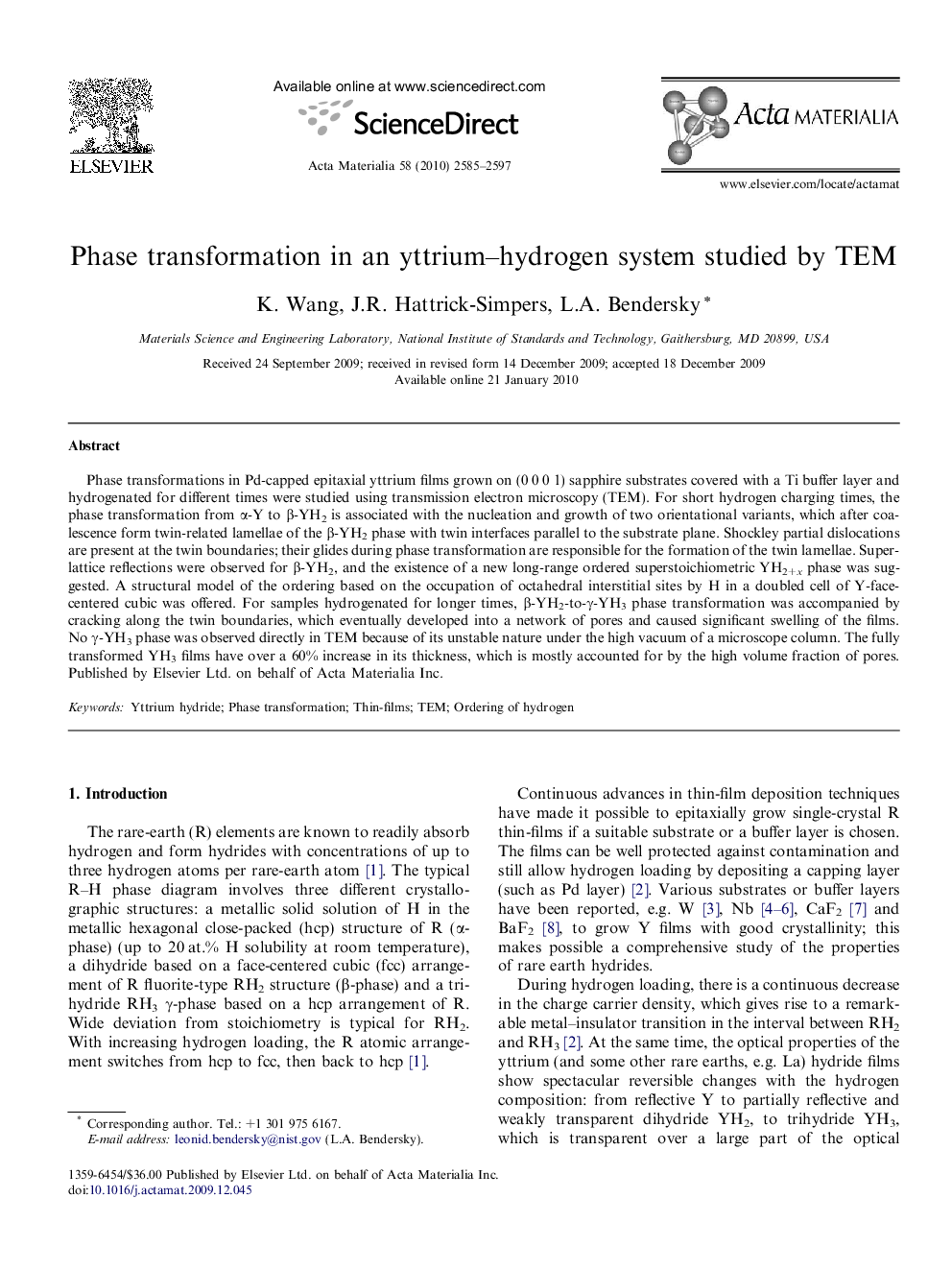| Article ID | Journal | Published Year | Pages | File Type |
|---|---|---|---|---|
| 1448943 | Acta Materialia | 2010 | 13 Pages |
Phase transformations in Pd-capped epitaxial yttrium films grown on (0 0 0 1) sapphire substrates covered with a Ti buffer layer and hydrogenated for different times were studied using transmission electron microscopy (TEM). For short hydrogen charging times, the phase transformation from α-Y to β-YH2 is associated with the nucleation and growth of two orientational variants, which after coalescence form twin-related lamellae of the β-YH2 phase with twin interfaces parallel to the substrate plane. Shockley partial dislocations are present at the twin boundaries; their glides during phase transformation are responsible for the formation of the twin lamellae. Superlattice reflections were observed for β-YH2, and the existence of a new long-range ordered superstoichiometric YH2+x phase was suggested. A structural model of the ordering based on the occupation of octahedral interstitial sites by H in a doubled cell of Y-face-centered cubic was offered. For samples hydrogenated for longer times, β-YH2-to-γ-YH3 phase transformation was accompanied by cracking along the twin boundaries, which eventually developed into a network of pores and caused significant swelling of the films. No γ-YH3 phase was observed directly in TEM because of its unstable nature under the high vacuum of a microscope column. The fully transformed YH3 films have over a 60% increase in its thickness, which is mostly accounted for by the high volume fraction of pores.
